There is no doubt that every person with a device capable of taking photos has snapped a landscape at one point in time.
Landscapes have the power to take your breath away and I can guarantee that everyone has been left in awe by phenomenal scenery.
Part of the wonder of landscape photography is the immortalization of Mother Nature.
The natural world is constantly changing and diversifying making it one of the most fascinating subjects to capture.
You can take the same shot of the same location and never get the same image twice.
Regardless of whether it has been years, months, weeks, days or even hours, the landscape will always be slightly different.
There is therefore so much beauty in capturing that exact moment in time.
And it is no surprise that landscape photography is one of the most popular photography niches.
Landscape photography is a passion of both amateur and professional photographers across the world.
But choosing the right camera for landscape photography is no small task.
With so many options to choose from, the decision can be overwhelming.
However, armed with the right knowledge, you can easily find the perfect camera to capture those awe-inspiring landscapes.
- Nikon D3500 W/ AF-P DX
- Canon EOS 6D
- Sony Alpha a7 IIK
- Sony Alpha a6000 Mirrorless Digital Camera
- Nikon D500 DX
Best Cameras for Landscape Photography – Reviews
I have a real travel bug and love exploring.
Whether I am flying across the world or having adventures close to home, my camera roll is bursting with different landscapes.
In an effort to improve my photography game, I recently decided it was time to upgrade my camera.
But in order to do the landscapes justice, it was important to find the right camera that captures the true essence of the scenery.
I did so much research in an effort to find the best camera for landscape photography.
To my surprise, I found several that were truly impressive.
Ultimately, I decided to go for the Nikon D3500.
I found this to be the best camera for landscape photography overall and it perfectly met what I was looking for.
However, just because I found it to be the ideal camera for me, doesn’t mean it is necessarily the one for you.
And with all the information I discovered about these five great cameras for landscape photography, I felt I should share the wealth.
Not only have I reviewed my top choice, I have also reviewed the other four contenders for the top spot.
So whether you are purchasing your first camera or looking for an upgrade, read on to find the best camera for landscape photography.
Nikon D3500 W/ AF-P DX – Best Camera For Landscape Photography Overall

The Nikon D3500 is an incredible camera choice for landscape photography.
With its impressive features, this camera captures the essence of vast landscapes with exceptional detail and clarity.
The camera boasts a 24.2 megapixel crop sensor capable of capturing stunning landscapes with rich color and fine detail.
The D3500 offers a wide ISO range of 100-25600 allowing you to adapt to various lighting conditions.
This flexibility helps you capture both bright sunlit scenes and low light scenarios with minimal noise and great focus.
Compatible with Nikon’s impressive range of lenses, this camera has a diverse range of wide angle options.
Nikon is renowned for its incredible wide angle lenses and I found that the 10-24mm zoom lens was a phenomenal option for capturing landscapes.
For videography, the D3500 supports Full HD 1080p video recording.
This allows you to capture high quality videos that showcase the beauty of landscapes in motion.
I was a little disappointed that this camera did not have 4K but the 1080p worked well to capture breathtaking scenes.
When it comes to battery life, the D3500 shines with its impressive longevity.
With a single charge, it can capture approximately 1550 shots making it reliable for long days of shooting in remote locations or extended photo sessions.
The camera is also incredibly lightweight thanks to its crop sensor.
This makes easy to carry to remote locations and landscapes that need to be accessed on foot.
It also has pretty great autofocus and you can manually adjust pretty much every setting,
The Nikon D3500 excels as a landscape photography camera.
I absolutely loved it and whilst it had some great competition, it blew other cameras out of the water.
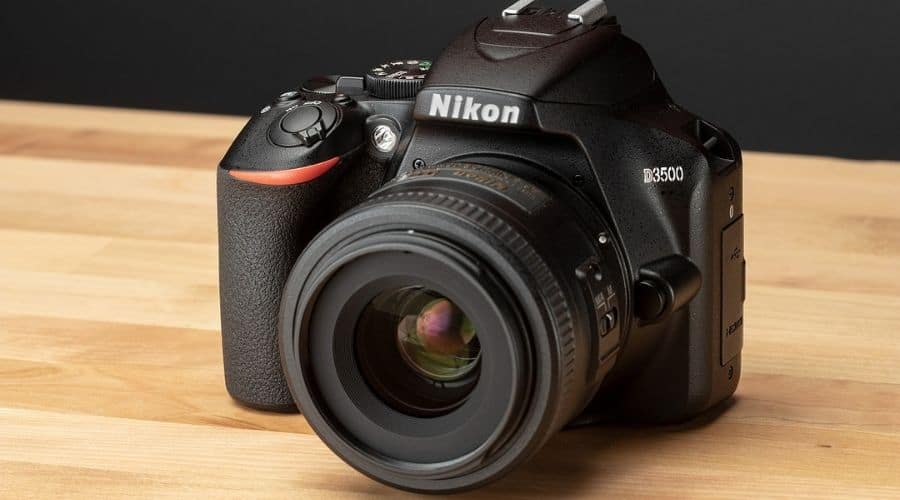
Camera Resolution
Boasts 24.2 megapixels that produces sensational image quality.
Sensor
This camera has a crop sensor. Whilst this does have some limitations, it means this camera is super lightweight which is a great bonus.
ISO
ISO range of 100-25600 which works really well.
Wide Angle
Compatible with Nikon’s outstanding collection of interchangeable lenses. To capture super wide scenes, I would highly recommend the 10-24mm.
Video Resolution
Captures video at up to 1080p. A little disappointing but a worthy compromise for its other features.
Battery Life
This camera has amazing battery life. It is capable of capturing up to 1550 shots per single charge.
“I found the Nikon D3500 to be the best camera for landscape photography overall. With its impressive image quality, low light performance and exceptional battery life, the D3500 is a phenomenal choice for capturing the true essence of scenery.”
Canon EOS 6D – Best Camera For Landscape Photography For Adaptability
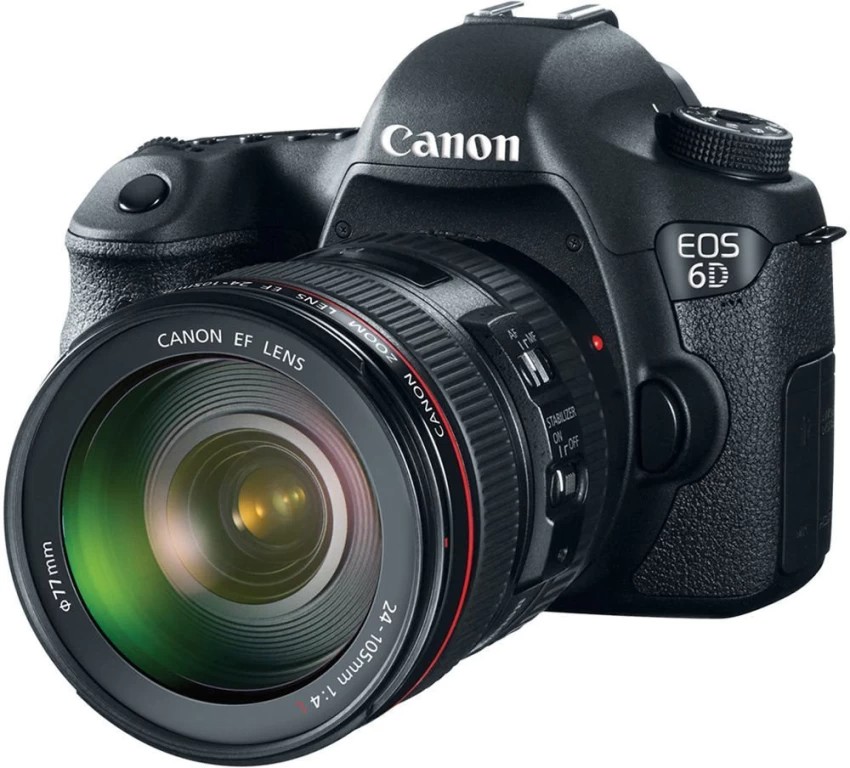
The Canon EOS 6D is a fantastic camera for landscape photography and was a great contender for my top spot.
Packed with incredible features, it excels at capturing the breathtaking beauty of landscapes in exquisite detail.
With a 20.2 megapixel full frame sensor, the EOS 6D delivers stunning image resolution.
Combined with Canon’s exceptional range of lenses, you can capture the most beautiful images.
The standout feature of the EOS 6D is its exceptional low-light performance.
With a native ISO range of 100-25600 (expandable to 50-102400), it allows photographers to capture landscapes even in challenging lighting conditions.
The camera produces remarkable image quality with minimal noise even at high ISO.
This allowed me to capture great photos in low light environments.
I captured some amazing sunsets, starry night landscapes and could continue shooting even when the sky turned gray.
When it comes to video, the EOS 6D offers Full HD 1080p video recording capabilities.
Whilst 4K would be a bonus, the camera’s video resolution delivers clear and detailed footage.
In terms of battery life, the EOS 6D is a reliable companion.
It can capture approximately 1090 shots on a single charge.
Overall, the Canon EOS 6D is one of the best landscape photography cameras.
Thanks to its high camera resolution, exceptional low light performance and wide angle capabilities, it has outstanding image quality and creative versatility.
If you’re looking for the best camera for landscape photography that can handle any environment, the Canon EOS 6D is the one for you.
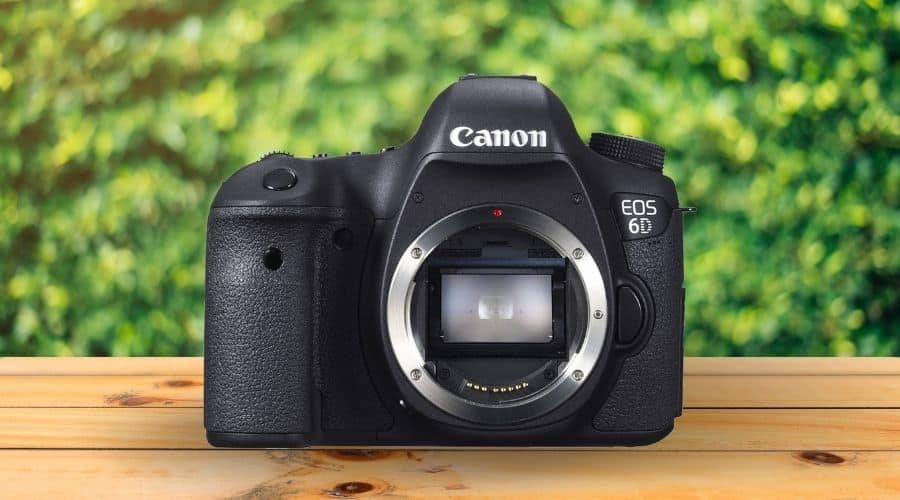
Camera Resolution
20.2 megapixels for stunning, detailed images.
Sensor
Full frame sensor offering you more creative control and great options post-production.
ISO
Native ISO of 100-25,600 (extendable to 50-102400) which performs exceptionally. This camera produces beautifully crisp and clear images no matter the lighting conditions and works well with minimal image noise at high ISO.
Wide Angle
Canon is one of the best manufacturers in terms of its lenses and offers some remarkable wide angle options. Whilst the 10-18mm is a popular option for landscape photography, I personally loved the 15-45mm for more flexibility.
Video Resolution
Shoots video in up to 1080p.
Battery Life
Impressive battery life capturing up to 1090 images per charge.
“The Canon EOS 6D has outstanding low light performance, I was seriously impressed. I can trust this camera to take magnificent photos even in difficult lighting conditions.”
Sony Alpha a7 IIK – Best Camera For Landscape Photography For Image Quality
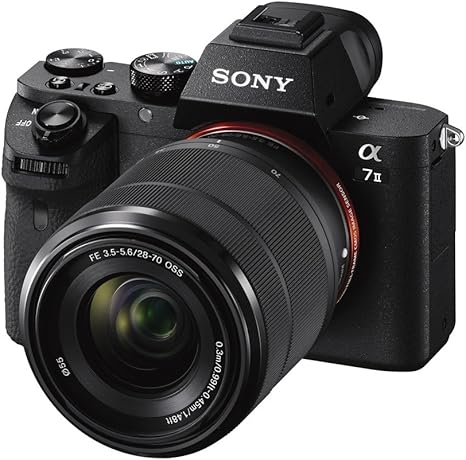
The Sony a7 IIK is an excellent camera choice for landscape photography.
It offers a range of features that enhance the quality and versatility of landscape shots.
With its 24.3 megapixel full frame sensor, the a7 IIK delivers impressive results.
It captures detail and color in its truest form showcasing the real beauty of nature.
While the a7 IIK performed admirably in low light conditions, it is worth noting that noise becomes noticeable after ISO 800.
This can limit its ability to capture high quality images in challenging lighting situations.
Sony also has great wide angle lens options.
The full frame sensor coupled with these wide angle lenses ensures your shots have exceptional image quality.
For video, the a7 IIK offers Full HD 1080p video resolution.
It delivers crisp and detailed footage allowing you to create a visual narrative of your chosen landscape.
One area where the a7 IIK massively falls short is its battery life.
With its poor battery performance, it may require additional batteries or a reliable power source to sustain long photography sessions or extended periods in remote locations.
Despite its limitations in high ISO and its poor battery life, the Sony a7 IIK remains a great choice for landscape photography.
With its great resolution and excellent lens options, you can leverage the camera’s strengths to capture breathtaking landscape imagery.
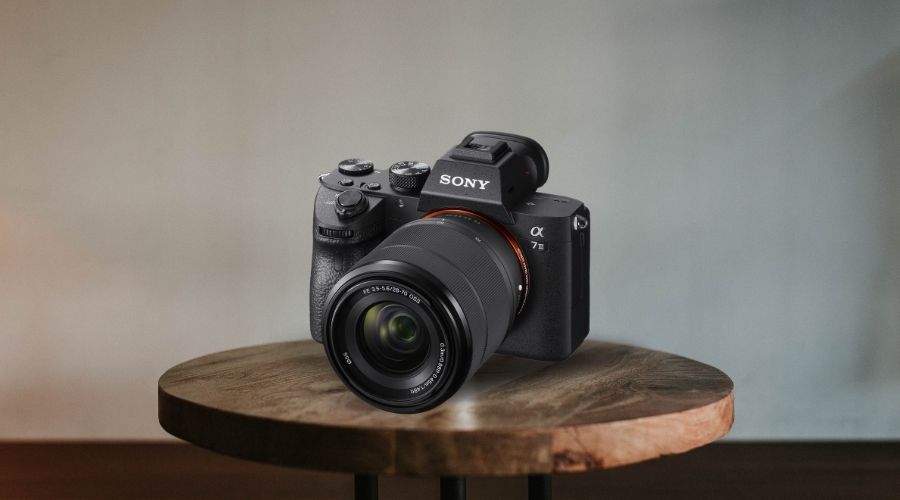
Camera Resolution
24.3 megapixels to capture beautiful landscapes in their truest form.
Sensor
This camera has a full frame sensor which when combined with its 24.3 megapixels offers great options for post-production and print.
ISO
ISO range of 100-25,600. It performs well up to ISO 800 but after this, images become noisy very quickly.
Wide Angle
I used the 11-18mm lens with this camera and found it took beautiful super wide images. However, the 16-50mm is also highly regarded and offers greater flexibility.
Video Resolution
Captures video in up to 1080p at up to 60fps.
Battery Life
Battery life is extremely poor and was a major let down. It can take approximately 360 shots per single charge so expect to take spares.
“Whilst the battery life is majorly disappointing, the Sony Alpha a7 IIK‘s outstanding image quality makes it a worthwhile compromise.”
Sony Alpha a6000 – Best Camera For Landscape Photography For Affordability
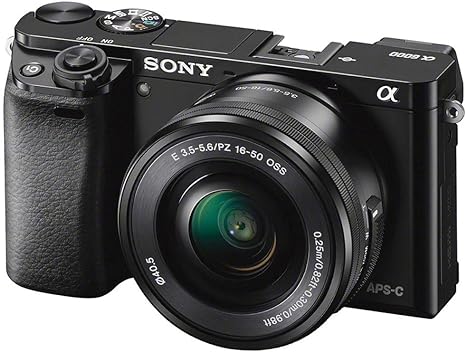
One of the most highly regarded cameras for landscape photography is the Sony a6000.
Offering a range of impressive features, it is a great choice for capturing stunning landscapes.
One of its most notable advantages is its compatibility with third-party lenses.
This allows you to explore a wide variety of lens options for different creative possibilities and often a cheaper price tag.
The a6000 boasts an amazing autofocus system with fast and accurate focusing.
This ensures that critical details in the scene are captured with precision, enhancing the overall image quality.
In terms of low-light performance, the a6000 delivers decent results, although noise can become noticeable at higher ISO settings.
Nevertheless, its 24.3 megapixel sensor allows for capturing landscapes with excellent detail and vibrant color.
The a6000 also offers Full HD 1080p video resolution that delivers high quality footage.
However, one area where the a6000 falls short is its battery life which is relatively poor.
On the whole, the Sony a6000 is a versatile camera that performs sensationally in landscape photography.
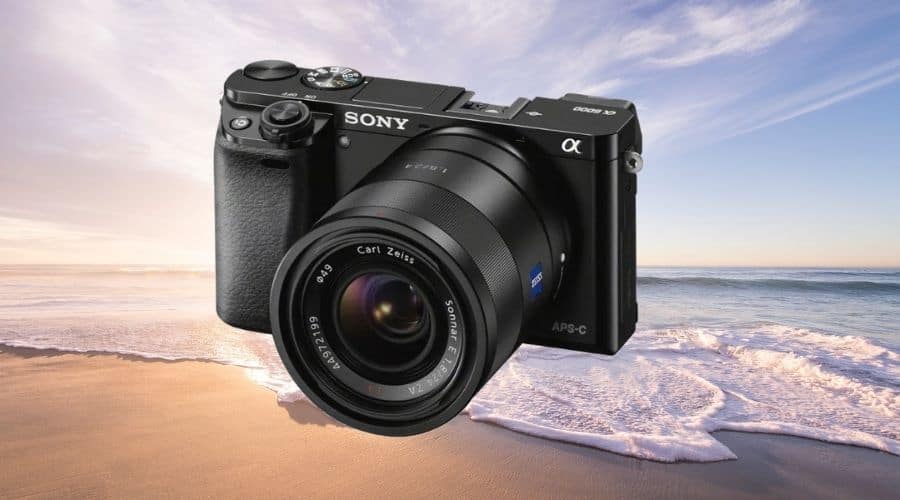
Camera Resolution
Shoots beautiful images with its 24.3 megapixel sensor.
Sensor
Crop sensor but is a great budget-friendly alternative to a full frame camera.
ISO
ISO range of 100-25600 which performs well up to ISO 800 but noise becomes noticeable beyond this point.
Wide Angle
This camera is compatible with a wide range of third-party lenses in addition to Sony’s selection. This provides you with more lens options and affordable alternatives.
Video Resolution
1080p that records beautifully for its price tag.
Battery Life
Poor battery life only able to take approx 310-350 shots per charge.
“I loved the Sony a6000 and think it is a great affordable option. Not only does the camera have a great price tag, its compatibility with third-party lenses further enhances its affordability.”
Nikon D500 DX – Best Camera For Landscape Photography For Low Light Performance
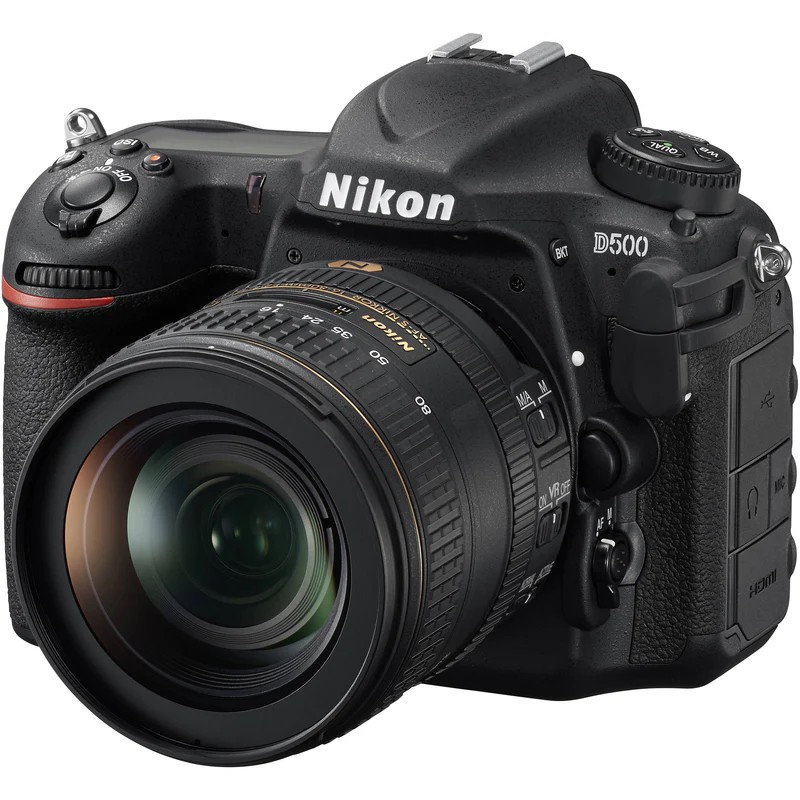
The Nikon D500 DX is a top choice for landscape photography.
Its advanced autofocus system ensures precise and quick focusing even in challenging shooting conditions.
With its remarkable low-light performance, the D500 DX’s performance shines in dimly lit landscapes.
It delivers clean and noise-free images even at extremely higher ISO settings.
This opens up your shooting opportunities to include sunrise, sunset and gloomy days, where lighting conditions may be more challenging.
The D500 DX also has a wide range of wide angle lens options to choose from which further enhances your creative options.
These lenses, combined with the camera’s 20.9 megapixel sensor, preserve the natural beauty of landscapes.
Of all five cameras, the D500 DX is the best option for videography.
With impressive 4K UHD video resolution, it can capture the motion of landscapes with stunning clarity and detail.
Ultimately, the Nikon D500 DX is a worthy investment for landscape enthusiasts.
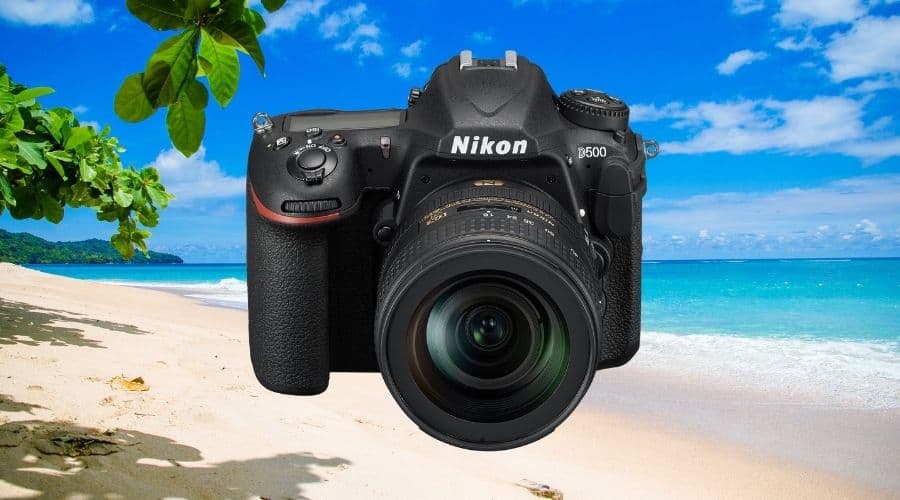
Camera Resolution
20.9 megapixel sensor.
Sensor
Crop sensor that works almost as well as a full frame.
ISO
Native ISO of 100 to 51,200 that works extremely well and enhances the exceptional low light performance of this camera.
Wide Angle
Great selection of wide angle lenses. I loved the 10-20mm lens with this camera.
Video Resolution
Stunning 4K resolution. This camera is the best option if you’re also serious about shooting landscape videos.
Battery Life
Great battery life capable of taking up to 1240 shots per single charge.
“The Nikon D500 DX is another camera where the low light performance is simply incredible. I know I can always count on this camera no matter the weather.”
How to Buy the Best Camera for Landscape Photography
In addition to my reviews, I’ve also highlighted exactly what I was looking for in a camera for landscape photography.
I believe these features are crucial factors to consider when searching for a camera for landscape photography.
Camera Resolution
In the realm of digital photography, one of the most crucial aspects to consider is the camera resolution.
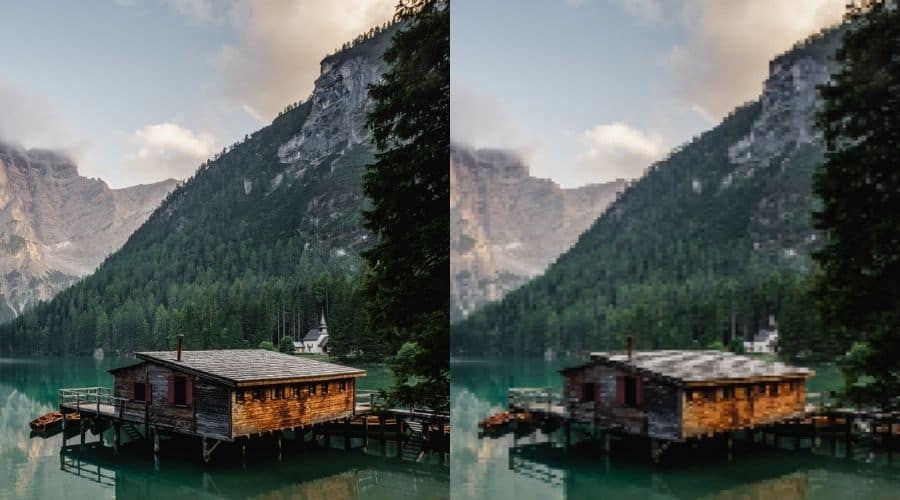
Resolution determines the quality and size of the end result.
This becomes evident when zooming in on a photo without sacrificing image quality.
A higher resolution preserves the fine details and showcases the trueness of a subject.
A camera’s resolution is measured in megapixels.
Higher resolution also proves advantageous for printing purposes.
This makes it particularly important to professional landscape photographers wanting to print.
A camera’s resolution is measured in megapixels.
So looking at a camera’s megapixels is a good initial indication of the overall image quality it can produce.
Sensor Size & Dynamic Range
When it comes to landscape photography, the size of the sensor plays an important role in determining image quality.
Ultimately, the larger the sensor, the higher the image quality.
A larger sensor not only produces better pictures in low light conditions but also reduces noise and captures more detailed images.
Digital cameras typically come with either a full frame or cropped sensor.
Full frame sensors measure 36mm x 24mm while cropped sensors are smaller in size.
Full frame sensors capture more of the scene and allow for more creative control.
They also typically have great low light performance and greater image quality.
But cropped sensors have advantages too.
Not only are they typically lighter and more affordable, they multiply the focal length of lenses resulting in excellent performance for landscape photography.
You can achieve great results with both a full frame and a cropped sensor.
It is primarily up to personal preference.
ISO Range
ISO plays a crucial role in landscape photography as it determines the camera’s sensitivity to light.
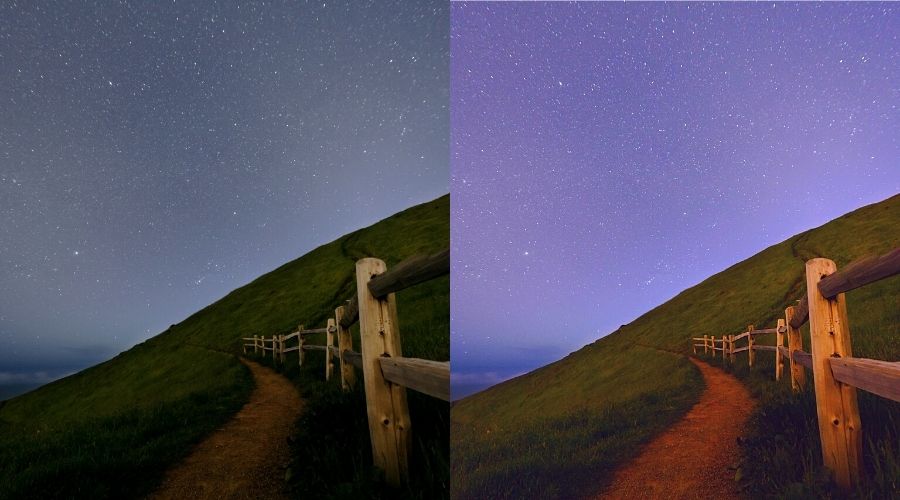
The ability to adjust the camera’s ISO and perform well becomes necessary when you need to brighten or darken your image.
Lowering the ISO results in a darker image whilst increasing the ISO produces a brighter image.
Increasing the ISO can help to capture the detail in tricky lighting conditions.
This is extremely beneficial to landscape photography when dealing with the unpredictability of nature’s lighting conditions.
By selecting an appropriate ISO range, you can ensure optimal image quality and preserve the natural beauty of landscapes in your photographs.
When looking for a camera for landscape photography, look for one with a good ISO range.
Even more importantly, look for a camera that performs well and produces high quality images at high ISO.
Wide Angle
Wide angle lenses are essential tools for landscape photography.
They allow photographers to capture the expansive beauty of vast landscapes.
These lenses have a short focal length, typically ranging from 14mm to 35mm.
As a result, they provide a wider field of view capturing more of the scenery.
Both DSLR and mirrorless cameras boast a range of interchangeable lenses to choose from this.
This offers maximum flexibility for your landscape photography.
These lenses open up a world of possibilities for capturing stunning landscapes and maximizing the visual impact of your photographs.
Video Resolution
If you plan to capture video as well as still images, video resolution should also be a consideration.
You can capture moving landscapes and create immersive visual experiences that can truly have impact.
Higher video resolution delivers exceptional detail and clarity of the landscape.
It enhances the overall visual impact, capturing the true essence of nature and bringing the viewer closer to the scene.
With higher resolution, every element within the frame has greater precision, showcasing the grandeur and beauty of the natural world.
Thankfully, video resolution these days is incredible.
Even smart phones can record in stunning 4K so if video is important to you, don’t settle for low resolution video on your camera.
Most cameras now have video recording capabilities of at least 1080p Full HD whilst many boast incredible 4K resolution.
Whether it’s for professional projects or personal enjoyment, investing in higher video resolution should be considered.
Battery Life
Whilst battery life is not the top priority for landscape photography, it should definitely be checked out.
When capturing stunning landscapes, photographers can spend extended periods in remote locations with many of the best spots and viewpoints accessed by hiking.
Those who are serious about landscape photography may also capture over a long period to capture the perfect lighting or moment.
A good battery life ensures that the camera remains powered throughout the session.
This allows for uninterrupted shooting with no worry of running out of power.
However, if a camera hits the ball out of the park in all other areas, battery life can be a worthy compromise.
Just make sure you head out with spares!
Best Camera for Landscape Photography – My Verdict
Overall, the Nikon D3500 was the best camera for landscape photography for me personally.
However, there were multiple cameras I absolutely loved.
The Canon EOS 6D and Nikon D500 DX were great contenders with outstanding low light performance.
Alternatively, the Sony a6000 is a great budget-friendly alternative.
And for beginners, I think the Sony a7 IIK is the most incredible choice.
The one which is right for you will depend on your circumstances and preferences.
But I can guarantee one of these five cameras will meet your needs.
Best Camera For Landscape Photography FAQ
Which camera is the best for landscape photography?
I found the overall best camera for landscape photography to be the Nikon D3500. This camera not only has a great camera resolution, it has brilliant low light performance and an outstanding battery life.
Which lens should I use for landscape photography?
You can capture landscapes on a great deal of lenses, however, wide-angles lenses are particularly critical for capturing more of the scenery.
You can choose a prime lens with a fixed focal length, however, zoom lenses will give you more freedom and flexibility with your shots. It also means you don’t need to carry multiple lenses when hiking.
How do I start landscape photography?
You can capture landscapes anywhere, with any camera and as your subject is nature, it’s typically free.
If you are ready to take your landscape photography seriously, upgrading your camera will seriously up your game. The Sony a7 IIK is one the best cameras for landscape photography and is perfect for beginners. Easy to use and with an affordable price tag, this camera is a great introductory camera. After that, start exploring and capturing Mother Nature’s beauty.

